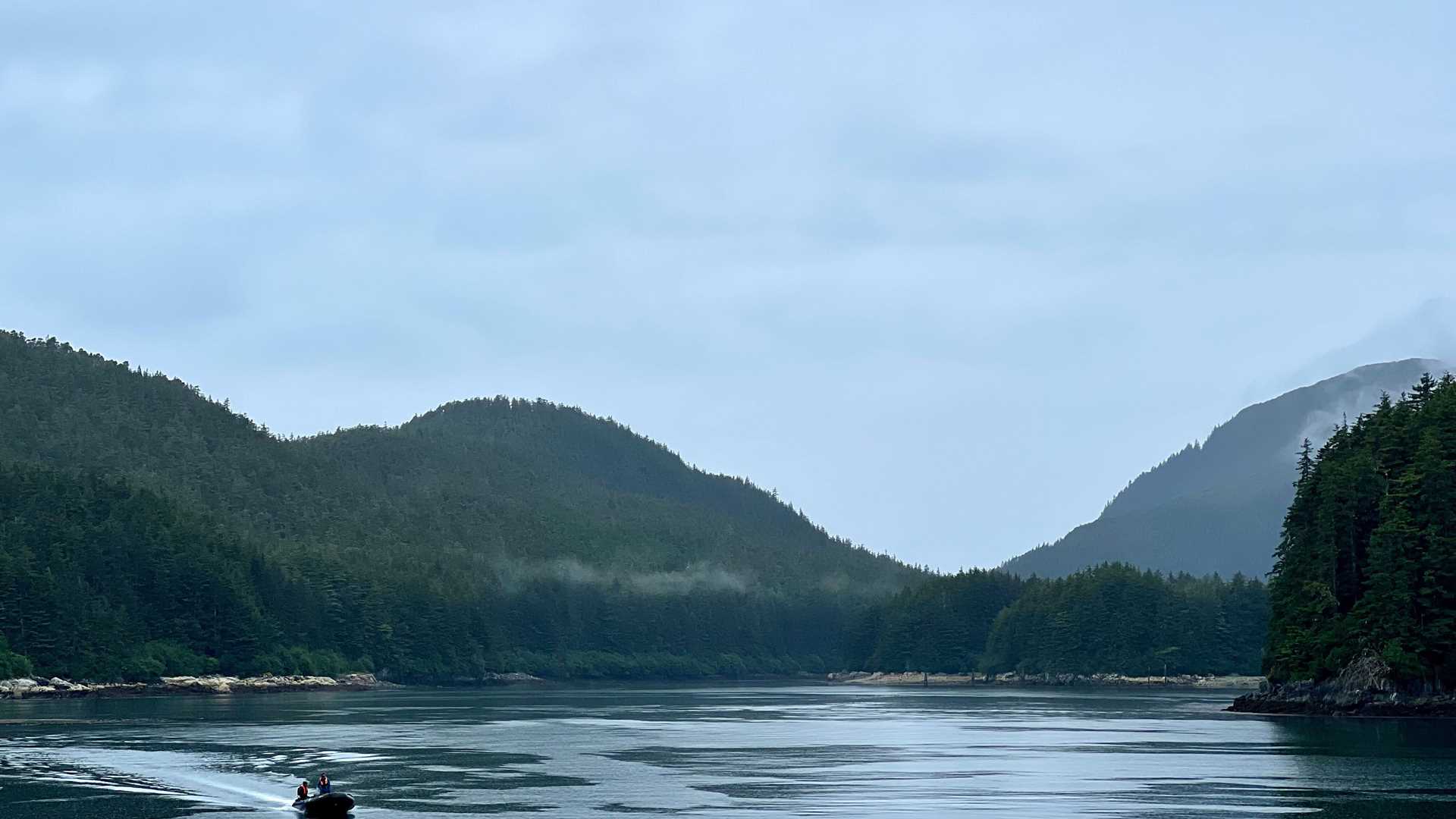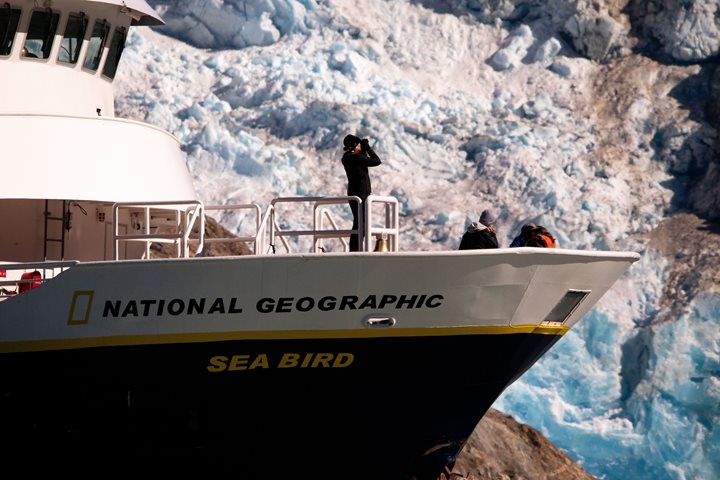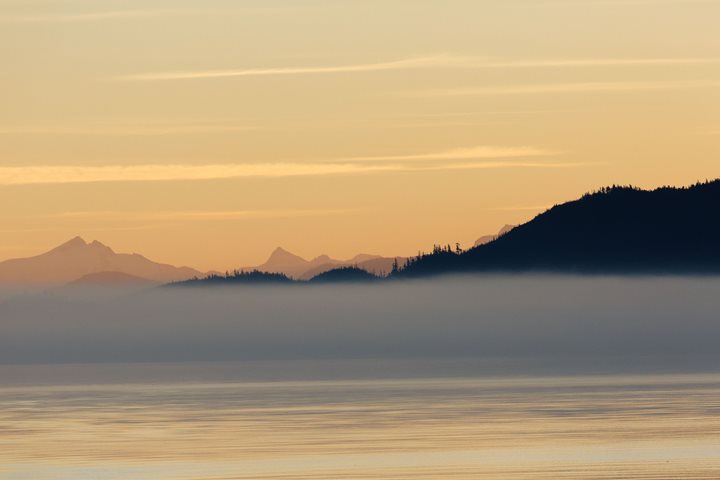What a day! What. A. Day. All on board National Geographic Sea Lion had an Alaskan experience for the ages just now, and it will be quite some time before any of us will emotionally recover from what we just witnessed.
It all began bright and early at the Inian Islands—the last land stop for the flowing tide before it rushes out from the Inside Passage to the open Pacific. If Alaska could be considered the “West Coast, Supersized,” then the Inian Islands are “Alaska, But More So.” Here the tidal flow is so extreme that rivers of ocean form at every rising and falling tide, creating whirlpools, standing waves, and upwelled boils that make even the most experienced Zodiac drivers tense up at the helm. The waters are often translucent shades of jade and blue green, a testament to the richness of the deep water brought surging to the surface.
We headed out on our exploration under stereotypically soggy skies to observe this slice of the Tongass temperate rainforest. We encountered frolicking and frisky hordes of Steller sea lions, fuzzy rafts of sea otters tucked into the thick blankets of bull and winged kelp forests, and countless feathered friends, including pigeon guillemots, tufted puffins, pelagic cormorants, glaucous-winged gulls, and bald eagles fishing for a complimentary meal provided by some of the most productive waters in the world. In fact, this is the place where eagles get to go fly fishing. The currents are so strong that even a rockfish can be caught during the changing of the guard. Its normally neutral swim-bladder becomes a death sentence. Upon a rapid tidal punch to the surface, their over-inflation leaves them pop-eyed and too buoyant to swim back to more comforting depths. On this day, we came upon one such tragic bocaccio rockfish (Sebastes paucispinis), just moments before it became a meal for a bald eagle. It was a testament to the power of these waters that even a fish can get caught up in current events.
And this would have been enough! Except, of course, Alaska always has a few aces up its sleeve. After a delicious lunch, we set off in search of wildlife, taking advantage of these sublime conditions. At the confluence of Chatham Strait, Lynn Canal, and Icy Strait and at the northern tip of Chichagof Island, we came across a pod of half a dozen humpback whales who gave us a show that will forever be seared into our collective imaginations. A mom taught her calf how to investigate our bow while a cooperative couple fluked beneath rainbows. Bald eagles swooped at the herring, creating inverted raindrops on the sea surface all around the ship. We stayed for hours, watching the whales in their food court as the light danced through rain clouds and illuminated why this part of the world is so special. We left with grins that could only be satiated by another raucous cocktail hour and a delicious dinner, followed by an investigation into the plankton that made this whale of a day possible. There’s no way to know how any other day could top this one—but we whale sea what’s in store for us tomorrow on another grand and adventurous day here, in the wonderful waters that belong to Southeast Alaska.







